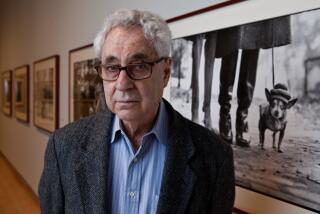Obituaries : Eugene Ostroff; Photography Curator
- Share via
Eugene Ostroff, 71, former curator of photography at the Smithsonian Institution and authority on photographic conservation and the technological history of photography. Ostroff spent 34 years at the Smithsonian, retiring in 1994 from the National Museum of American History, one of the Smithsonian’s 16 museums. He helped build the Smithsonian’s collection of more than 100,000 images and 10,000 pieces of equipment, which includes the world’s longest photo negative--a 180-foot-long, coast-to-coast aerial photograph of the United States taken by the Navy. He was the force behind the 1972 opening of the museum’s Hall of Photography, and assembled exhibitions of notable photographers, including Robert Capa, Imogen Cunningham and Richard Avedon. A New York native, Ostroff studied photography as an undergraduate at Los Angeles City College and New York University. He took advanced courses in photographic engineering at New York University and Columbia University, later developing a nondestructive method of restoring faded photographs through irradiation. He curated two traveling exhibitions, “Western Views and Eastern Visions” (1981), which showed the role of photography in luring 19th century Americans to the West, and “Photographing the Frontier” (1976), which documented life in the American Northwest and Southwest in the last half of the 19th century. A consultant to museums and governments around the world on standards for storing and displaying photographs, he was considered a major influence nationally on the way photography is viewed, collected and interpreted. On Aug. 19 of cancer at Sibley Memorial Hospital in Washington.
More to Read
The biggest entertainment stories
Get our big stories about Hollywood, film, television, music, arts, culture and more right in your inbox as soon as they publish.
You may occasionally receive promotional content from the Los Angeles Times.










